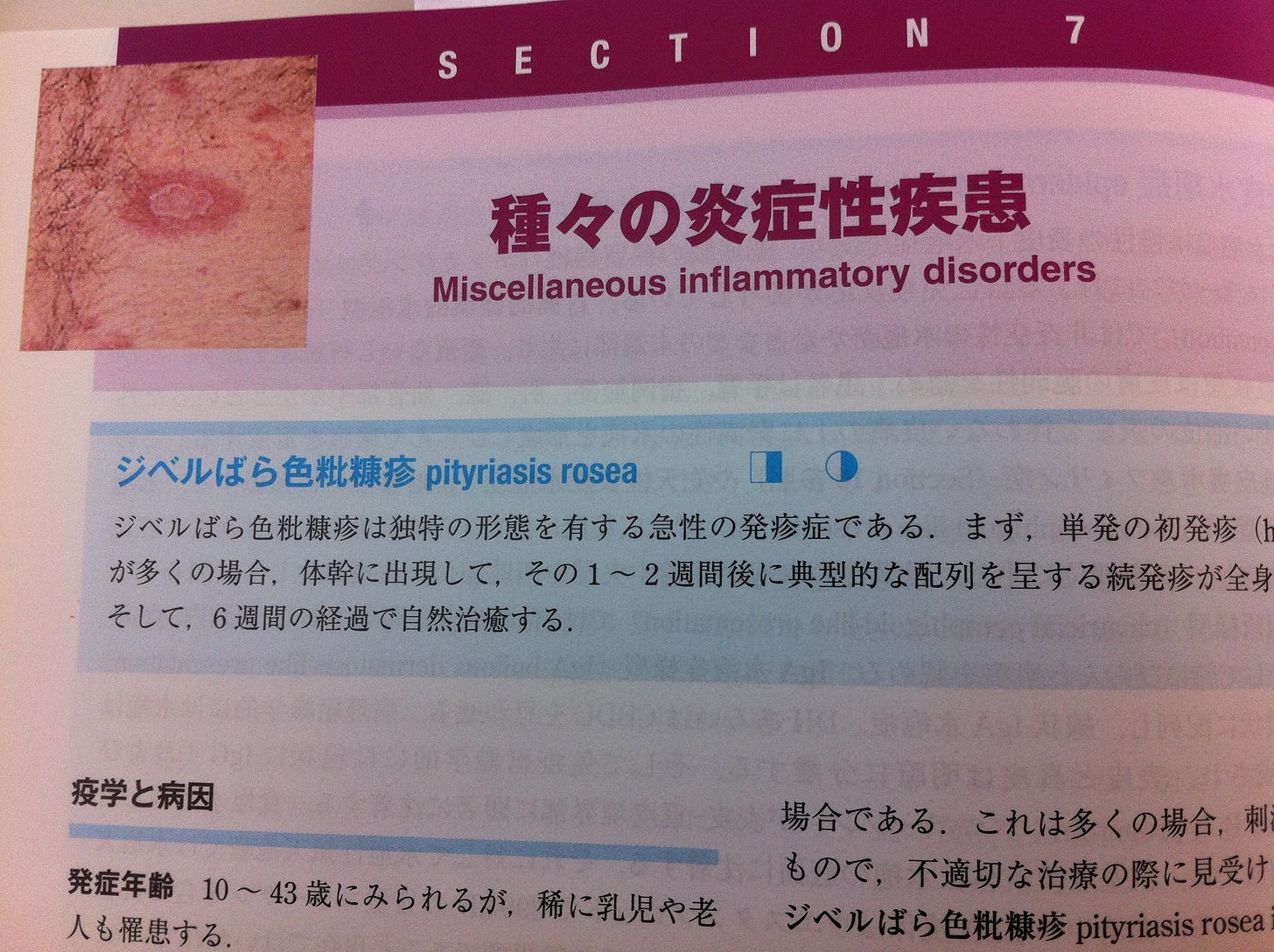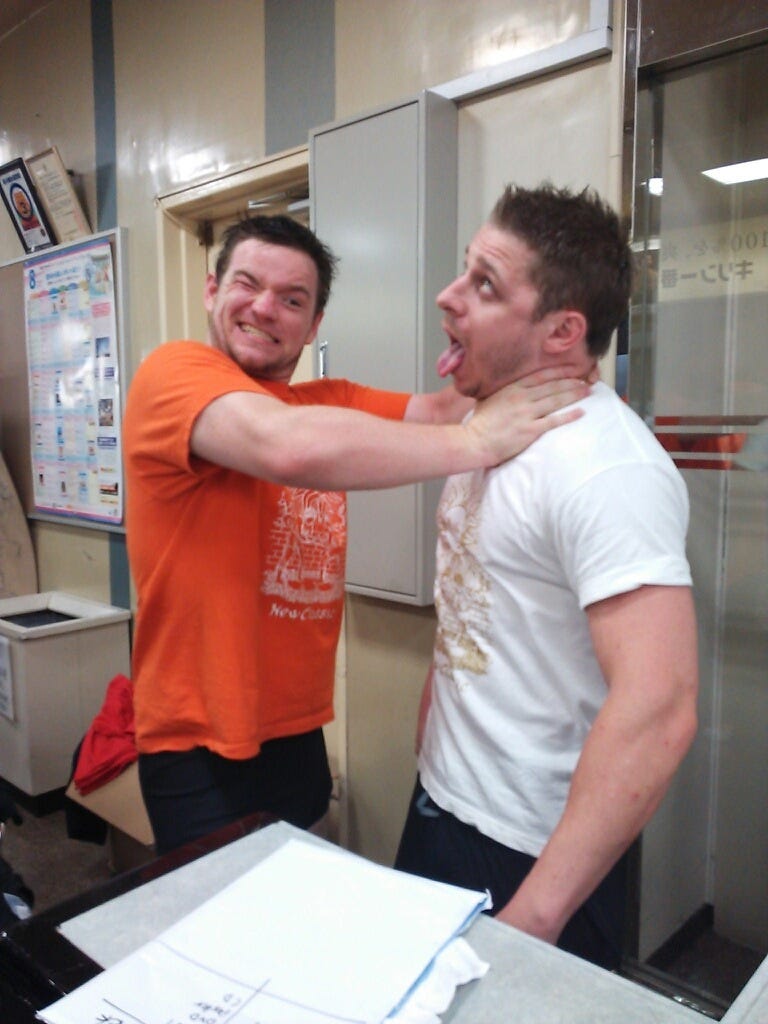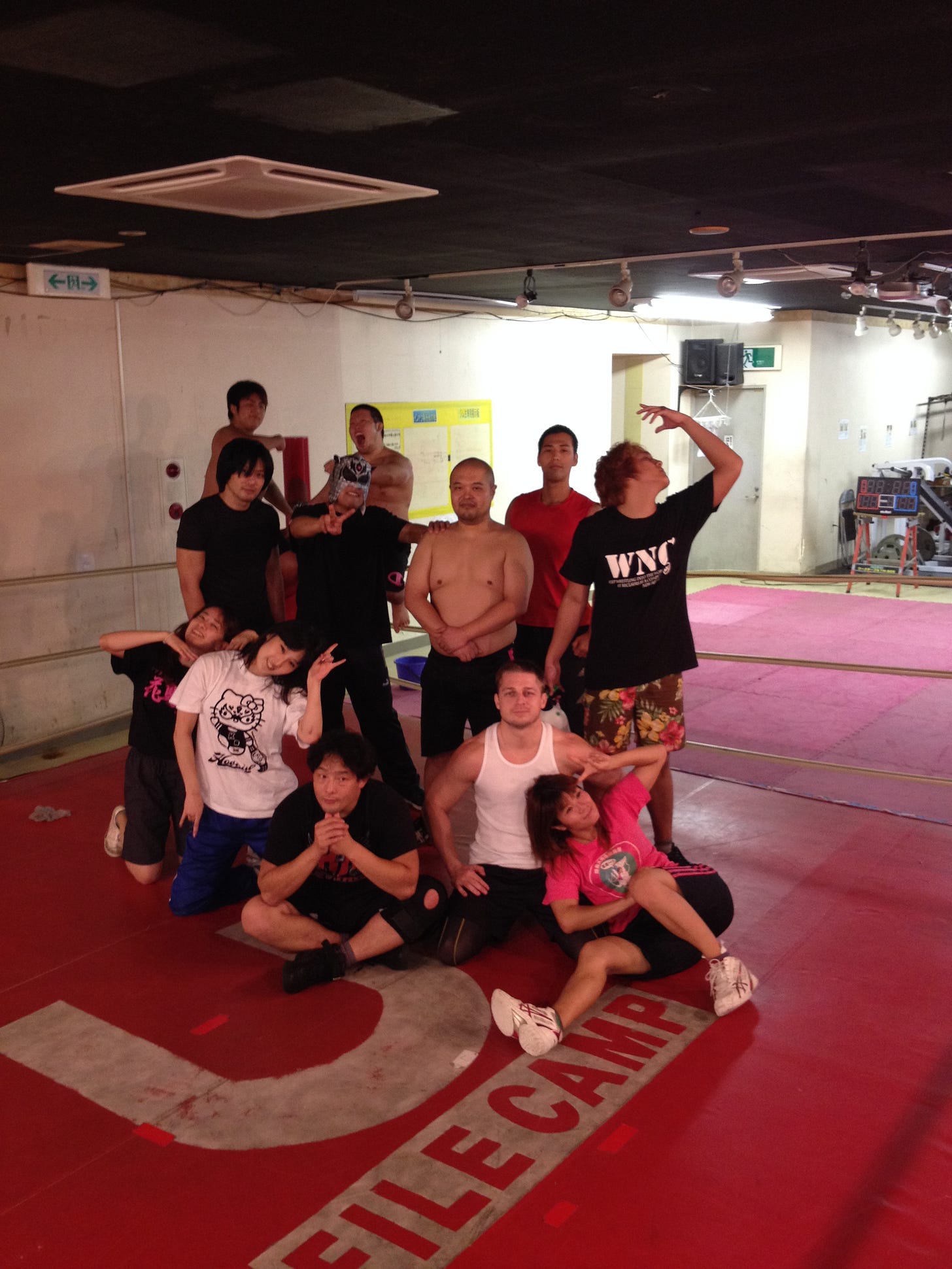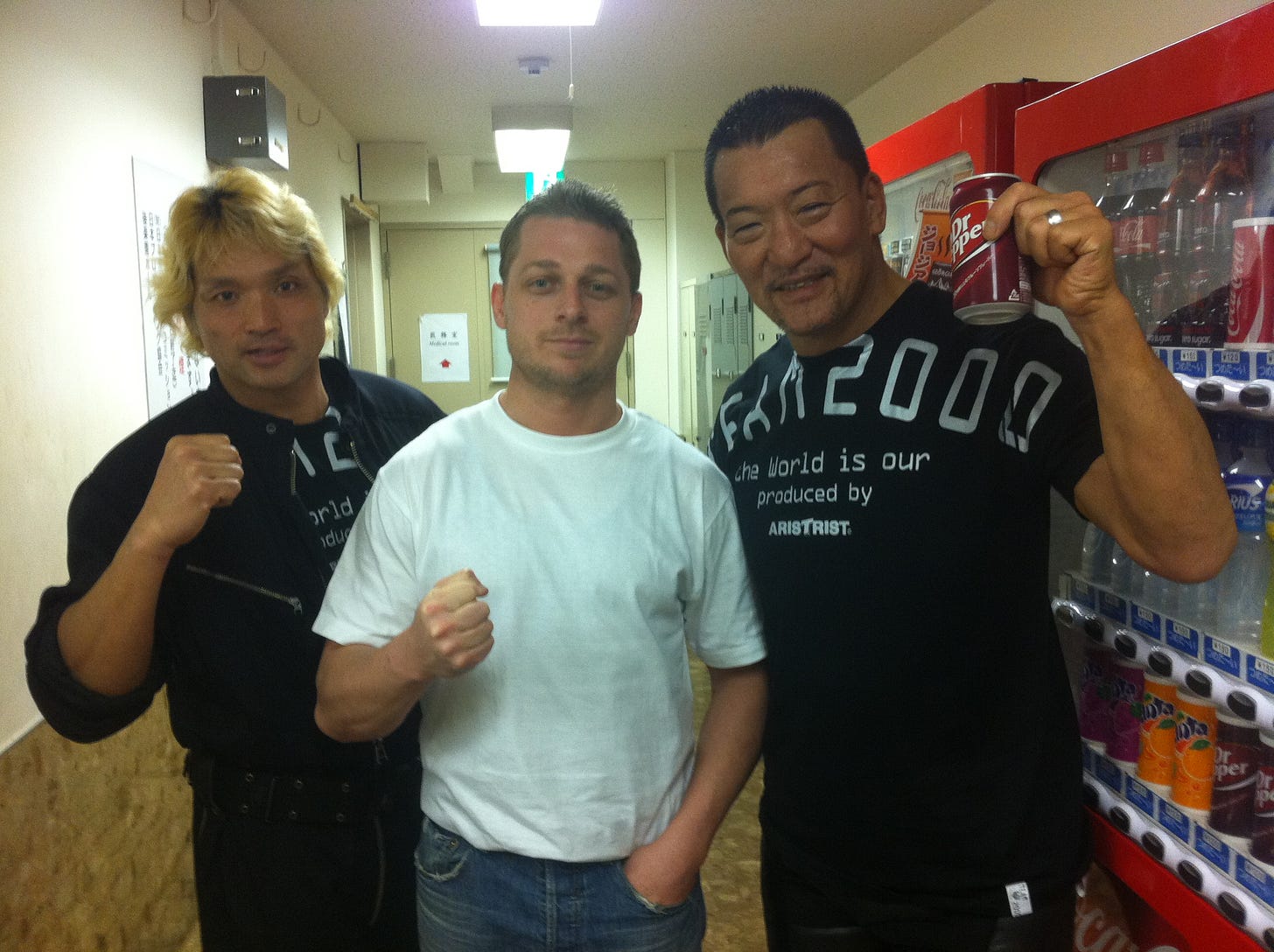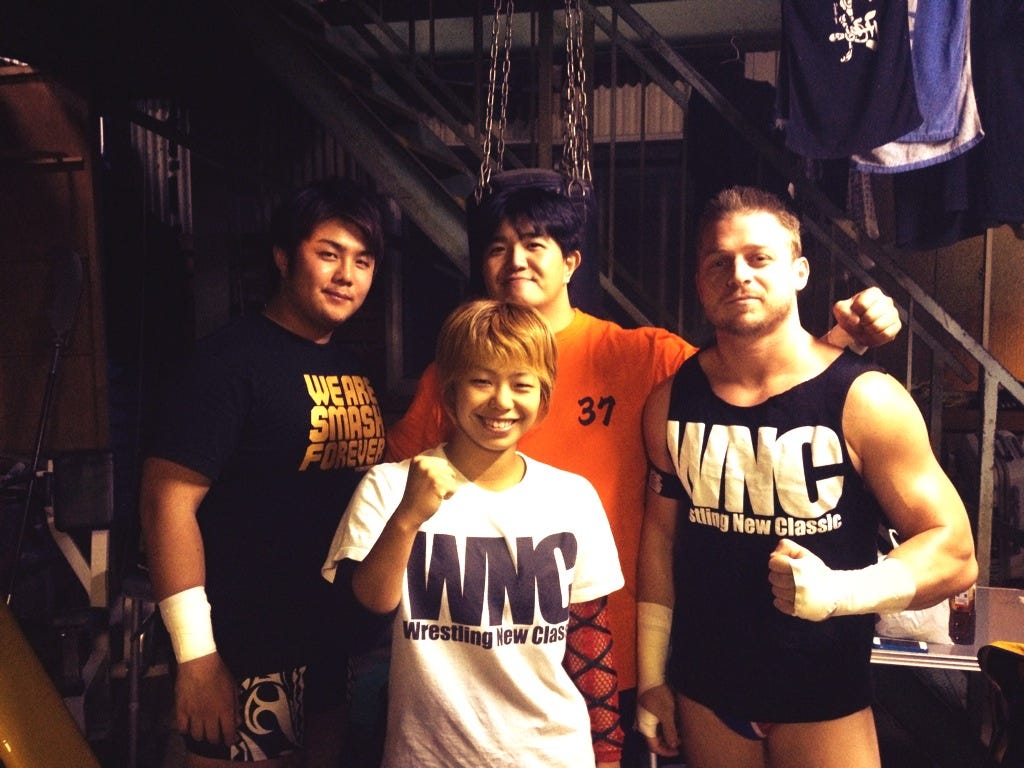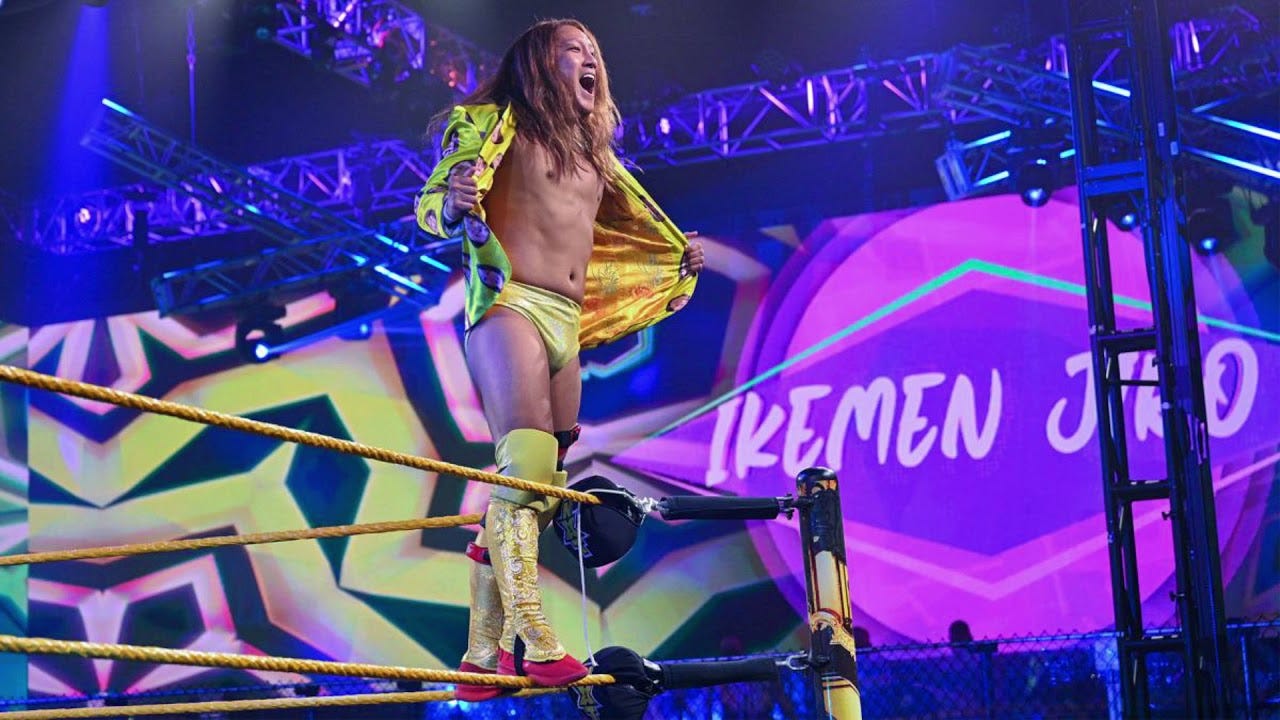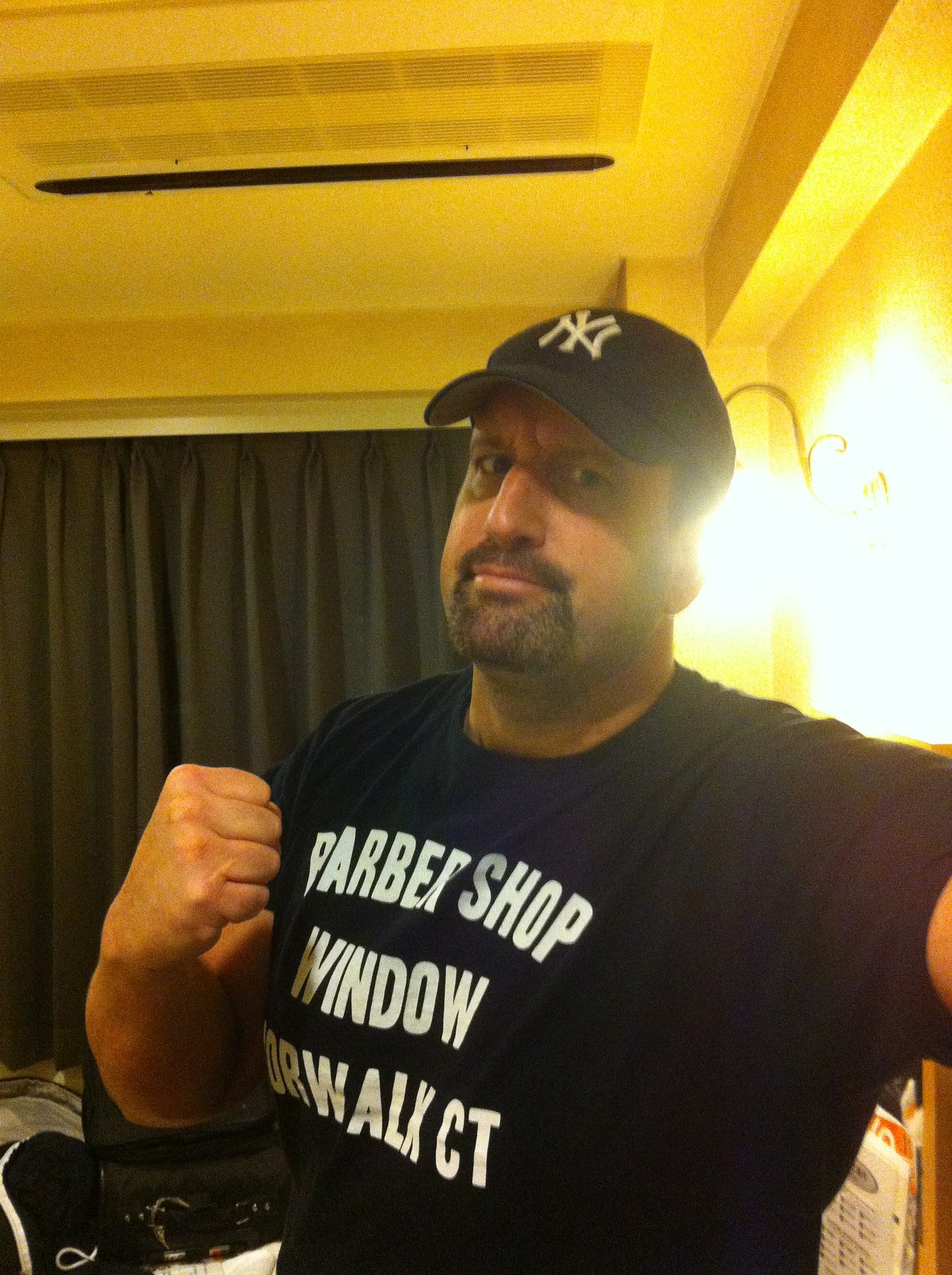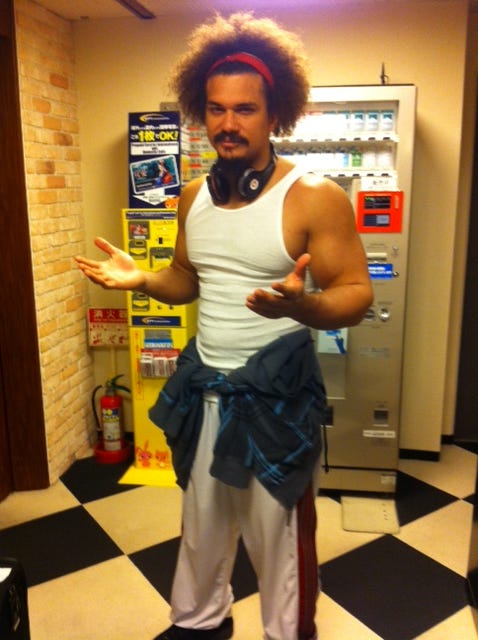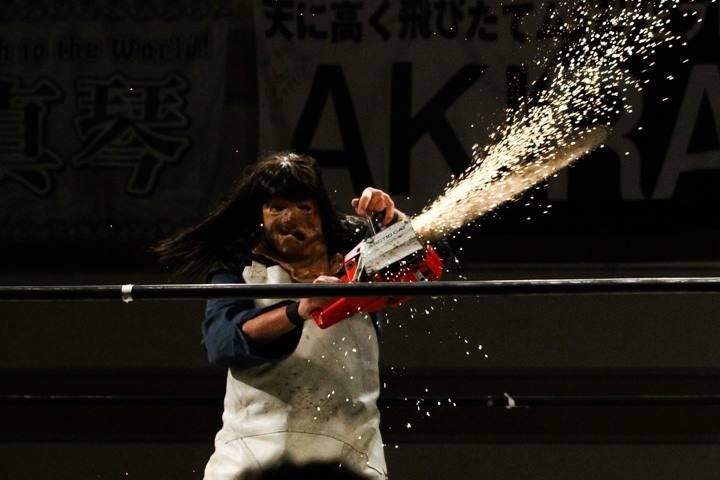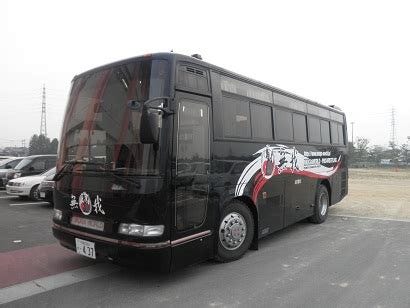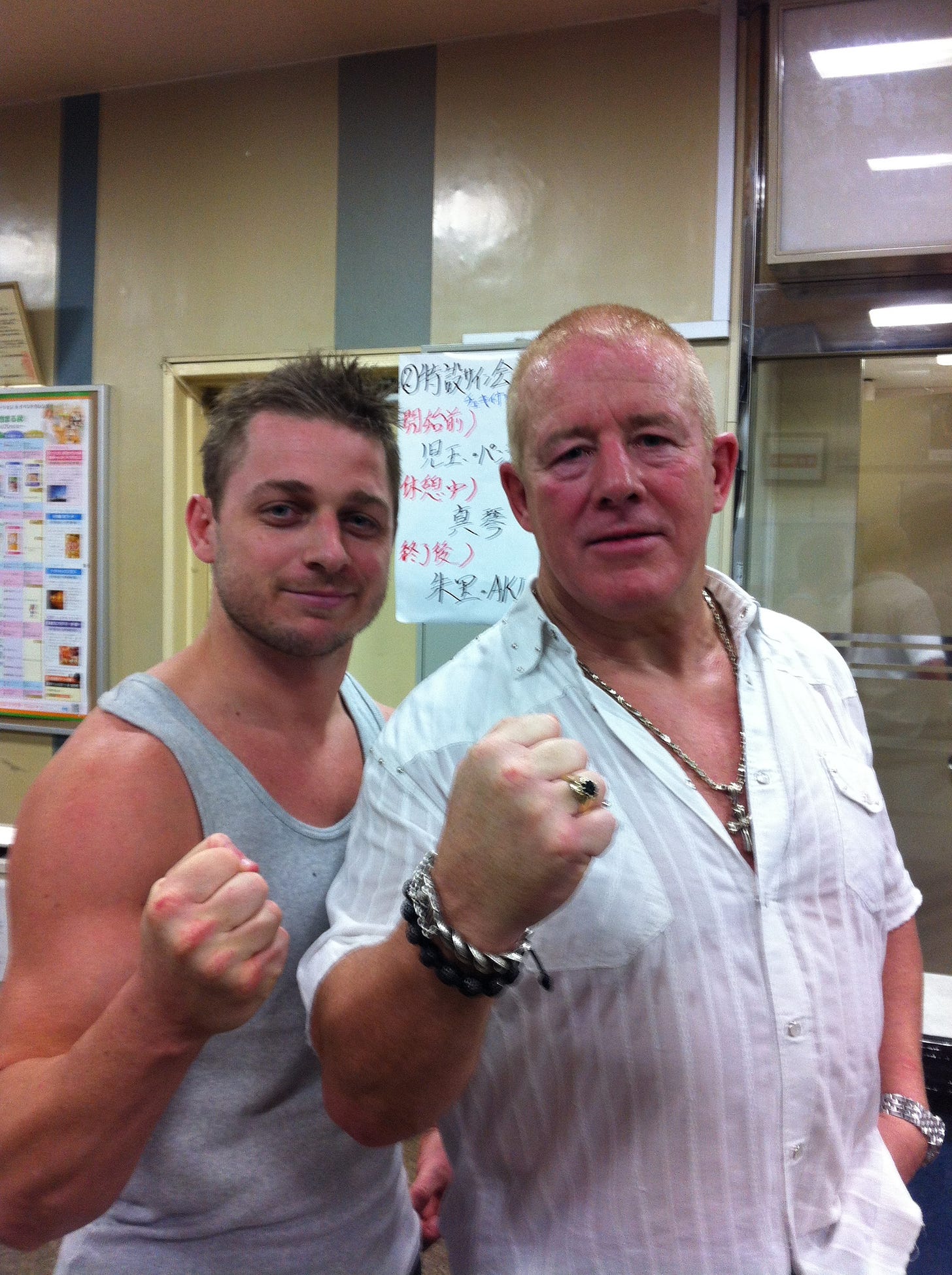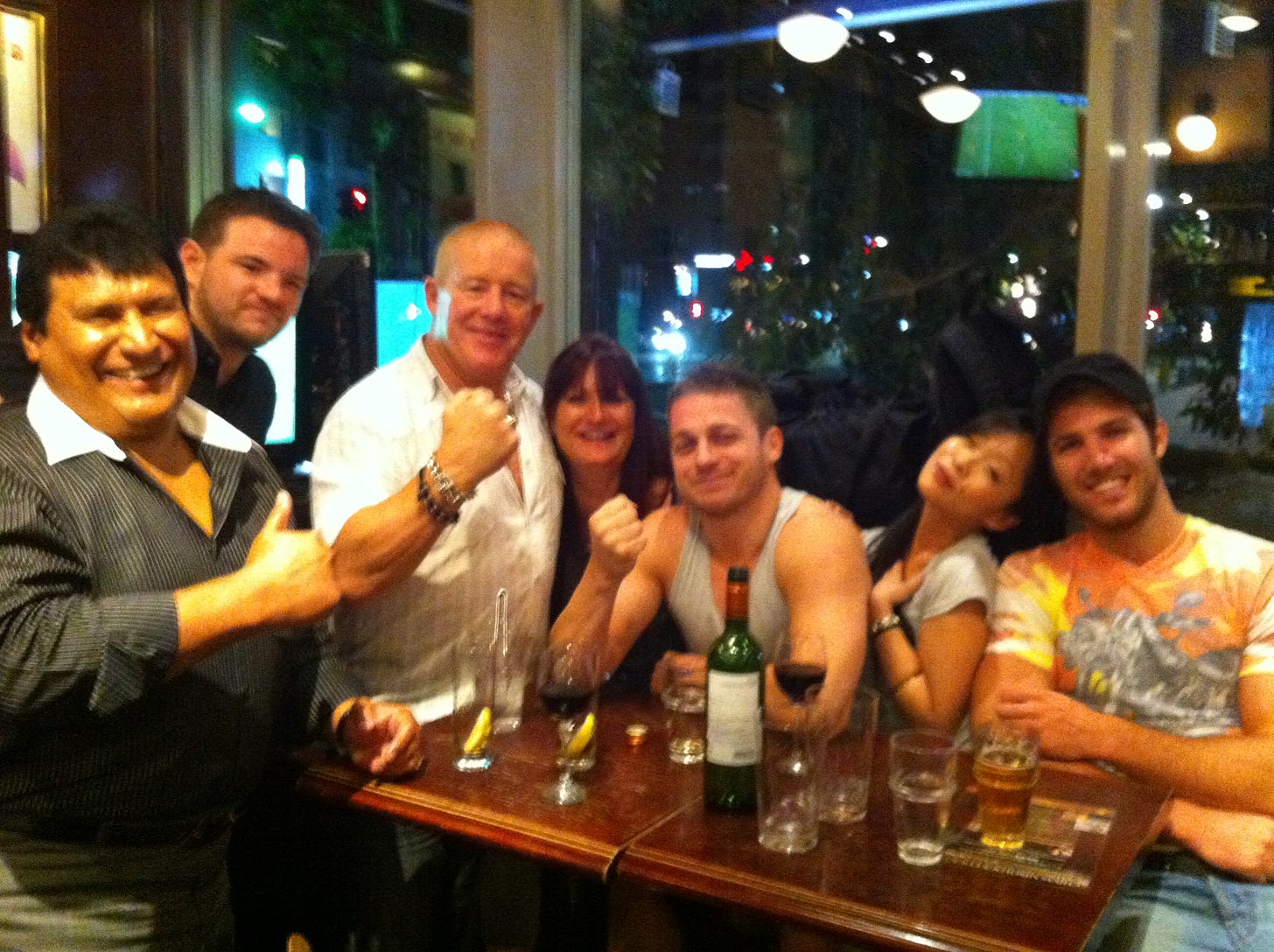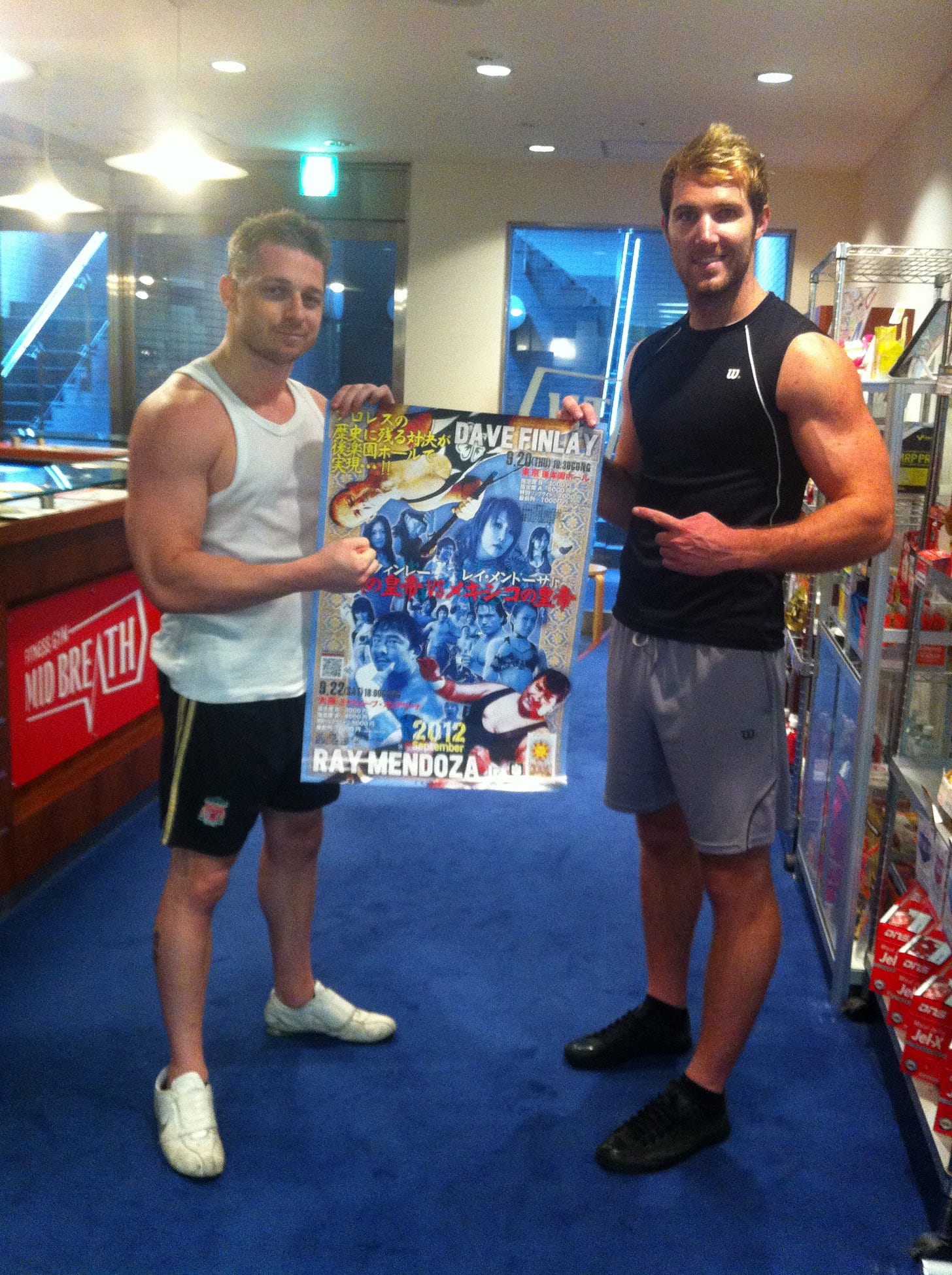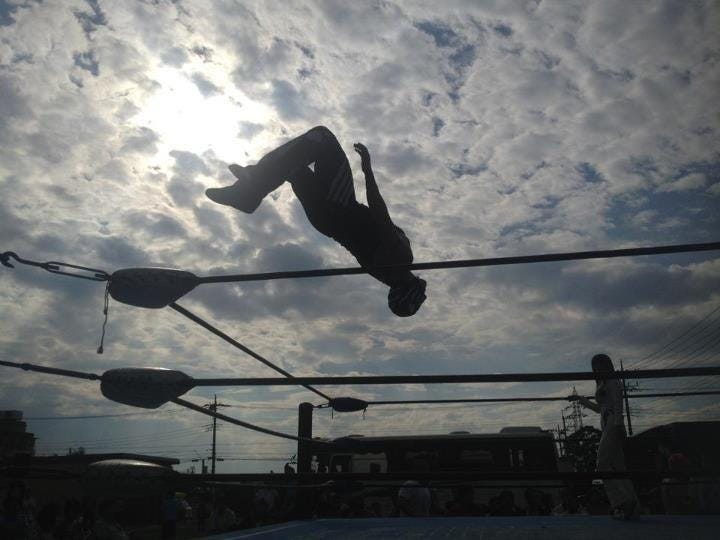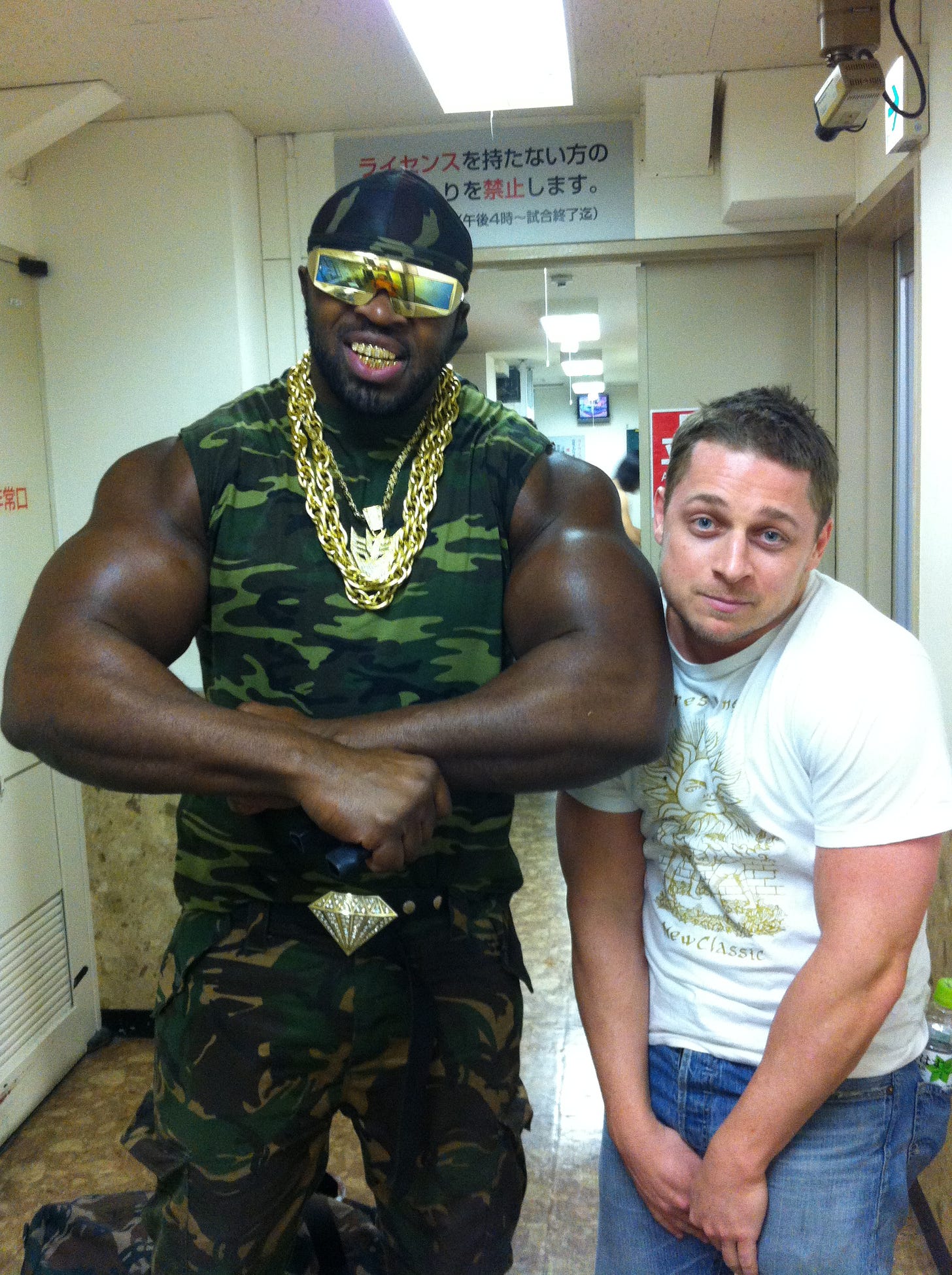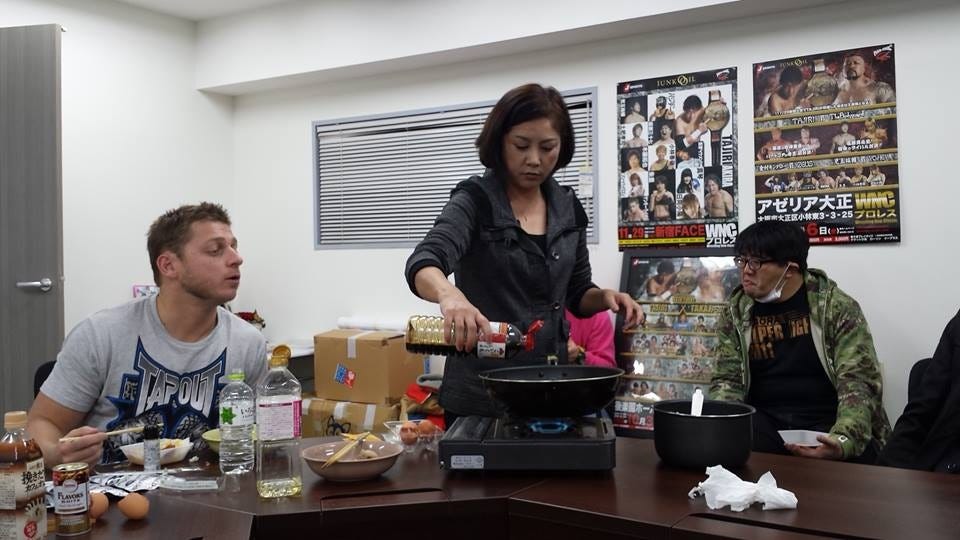(This story takes place entirely in the year 2012 unless written otherwise)
In March of 2012, I got a call from Akira that Tajiri was starting a new wrestling promotion called Wrestling New Classic (WNC). Tajiri is one of those guys that goes his own way, you are either all in or you are all out. Sakai, the then-SMASH owner (and current Pancrase MMA owner) found this out the hard way and the two parted ways. Tajiri found a new owner, through Kana’s connections, and the three of them launched WNC in April of 2012. It was a clear partnership on the outside. This was Tajiri AND Kana’s promotion, but it was a partnership doomed from the beginning.
Tajiri had called the new promotion Wrestling New Classic because he liked the abbreviation “WNC”. On the final SMASH show, legendary Irish wrestler Dave “Fit” Finlay closed out the main event by grabbing a microphone and instructing Tajiri to “keep wrestling classic”. Later on Tajiri would tell everyone that he got the Wrestling New Classic name after hearing those words, but this was not actually the truth. The truth is, Tajiri had already come up with the Wrestling New Classic name and had instructed Finlay to say these lines after the last ever SMASH match. Tajiri and Finlay had just put on an absolute MASTERPIECE of a title match when Finlay grabbed the microphone. Nobody backstage at the last SMASH show knew Finlay was going to say “keep wrestling classic”, except Tajiri and Finlay. What that really meant was not telling Sakai - who wouldn’t allow Tajiri to set up his new promotion on SMASH TV time. Nonetheless, it went ahead smoothly, and Tajiri got his wish. Wrestling New Classic was born. Fast forward to 2:10 of this video to hear the classic (no pun intended) line.
Tajiri was now looking for looking for new recruits, and I happened to be in the right place at the right time. As I mentioned in previous posts, the cost to train with WNC was 33,000 Japanese yen per month, roughly $300 USD. If you wanted in, you had to pay. A lot of wrestling schools in the US make you pay it all up front, knowing that most people will not come back, forfeiting their money. There is a famous story of The Undertaker paying up front, and his trainer then fleeing town with his money. This doesn’t happen in Japan.
I went down to the famous Nishi Chofu Arena, which I now have many fond memories of, to watch training. Inside, there was an MMA dojo called U-File Camp, which was owned and operated by the famous Pride and UWFi fighter Kiyoshi Tamura. It has since relocated, but the famous red ring is now gone. At U-File Camp however, the ring was on the ground (wrestling rings are always elevated) and the ceiling was low, making it hard to practice any kind of top rope move. This is one of the big reasons why I didn’t really bother trying out high flying moves.
For this first session of the year, about 20 people lined up in a circle inside the ring as Tajiri led training. If you fast forward to 1:28 of the following video, you can see what U-File Camp looked like, and how the wrestlers would line up to start and end training.
I watched on from the sidelines as everyone was there from Tajiri to Akira to Lin Byron (RIP) to Syuri and to Kana. Tajiri put them through an entire session of squats, pushups, mat work, and techniques and it looked absolutely brutal, but I was so excited because soon I would be joining these guys.
What I didn't tell anybody was that a week earlier, I had contracted a crazy rash called pityriasis rosea out of nowhere that started from a little spot under my arm, and spread to my entire body. I was covered neck to toe in the rash, and had to cover up my entire body whilst watching training. Thankfully I did a good job and no one noticed, but it made hard training quite painful. The doctor told me it would clear up naturally in 6-10 weeks, but I was only a week into having the rash. I couldn’t sit on the side lines for 2 months waiting! So I did some research. I found out that the rash doesn’t like UV rays, so I went to a tanning salon every second day and it worked. The rash was gone within a week, but I was now as red as a lobster, and in pain from having severe sunburn. But the rash was gone, and I was ok. I took this photo in the doctor’s clinic as she was examining me.
After the training, Tajiri barely looked me in the eyes and just said, “welcome” and walked out. This was not to be rude, it’s just a habit of his. Tajiri doesn’t look anyone in the eyes when he speaks. Josh O’Brien, the only other gaijin (foreigner) in the group, came over and asked me if I liked it and would I join? I thought this was a bit weird because usually it should be me who is begging to have a chance. He seemed happy to have another English speaker around, and I also was happy to have a fellow foreigner to talk to. Josh was a good guy, who was often misunderstood by Tajiri and the others. We had a lot of talks and I often found myself agreeing with him on different things, but I also knew I had to toe the line as the company man that I had to be, in order to survive. Yes sir, no sir, thank you very much sir, I am sorry sir, are the words you need to know if you want to survive in any kind of Japanese company. Josh ended up leaving WNC in 2013, but people would still come up to me with his photos and ask me to sign them. I guess we do look a little similar, and I thought we could have made a good tag team too.
Josh told me on that first day that usually it's only a few guys that come to training and that having over 20 is incredibly rare. In all my time training in WNC, I’d never see more than 7-8 at training and sometimes just 2-3 people. I’d also never see Tajiri in training again until a year later when he asked me why the young boys and rookies aren’t improving. I told him nicely that we’d all love to learn from him and he started turning up every Wednesday in 2013. But for 2012, he wasn’t around at all.
Hajime Ohara was the leader of the young boys and rookies and he took training twice a week. In Japan, a young boy is defined as anyone who has been wrestling two or three years or less, and a rookie is someone who hasn’t debuted yet. I was in the latter group. Ohara was a real dick to us, constantly berating us, screaming at us, basically being the Japanese version of R. Lee Ermey (Boot Camp Scene) from Full Metal Jacket. I later on found out when we talked in private, that this was only a character.
“I don’t want to be such a dick to you guys, but if I don’t, nobody will listen, and nobody will train hard”.
The rookies were mixed bunch of rejects from bigger companies, and guys and gals with dreams that to be honest, had no chance of coming true in any other company, myself included. There was a skinny kid called Shota Nakagawa, who was also a referee. He was unable to debut under Tajiri and when WNC closed it’s doors in 2014, he debuted in Asuka Project and is now working the indies quite a lot. He’s talented, but never got his chance in WNC. He was also the referee for my debut match. The young boys (Kodama, Kuroshio, Doi) had nicknamed him Chef but I would always confuse the katakana (used to write foreign words in Japanese) and accidentally call him Jeff, in emails.
Masaya Takahashi was a judo champion who would debut only months after I joined. He ended up becoming one of Japan’s most well known hardcore death match wrestlers. The young boys used to call him Gori-chan, because he looked and walked like a gorilla they said. It was a name he seemed to enjoy too.
Another rookie, Koharu Hinata, was a former porn star turned wannabe wrestler and was a referee at the time. She was incredibly tiny, at about 4’10, but she too ended up debuting about 6 months after me and has gone on to have a nice wrestling career.
There was one guy called Tencho, and I don’t know his real name. Tencho in Japanese means “store manager” and I assume he was given that nickname because he ran a restaurant. He was in his early forties and incredibly out of shape with a massive gut. He faded out of the wrestling business after WNC closed down, having not been able to make it in the business. He was our sound and music man on every show once we changed owners in 2013. More on that in the next post. I dug hard to find a picture of Tencho, and I am so happy I found one. You can also see current WWE NXT star Ikemen Jiro at the very beginning of his Ikemen (meaning handsome) character.
Tencho did have his little 5 minutes in the spotlight though in 2013, when Tajiri made a funny offshoot promotion called Kuzu Pro. Kuzu in Japanese means trash and Tajiri had the idea of running shows with “trash” wrestlers. Some of the skits were absolutely hilarious. Tencho came out in a big winter overcoat to Rocky music. At least he can say he was able to get in the ring. I saw him puke many times during training.
Here is a “press conference” in the Kuzu Pro “office”. The theme of everything being trash is fairly obvious.
There were others, including Katsumi Tamagawa, who is now a respected referee. We saw a few others come and go during my first year in the company, but we were generally the same group. Kaho Kobayashi joined us as an 18 year old girl and is now having a great career. There was one other girl Haruka who joined us, trained hard for 18 months, then had her debut match and retirement match on the same night in 2014. I haven’t heard anything of her since.
The young boys were all kids. Jiro Kuroshio was 18 (before his Ikemen gimmick) and was a natural star who didn’t need to train, and he basically never did. He is now in the WWE and doing very well - the kid was born to be a professional wrestler. Koji Doi was also 18 and built strong. Yusuke Kodama was a little older, maybe 23, and would later replace Ohara as the leader of the young boys when Ohara was let go by Tajiri. Mitoshichi Shinose was an out of shape, overweight salary man who had a mid-life crisis at 35, quit his job at Bic Camera (electronics chain store) and decided to become a wrestler. He never came to training more than 2-3 times whilst I was there, but he had been able to debut at 37 years old and was hence given the name Mito-Shichi, because the Japanese kanji are a 3 and 7.
Shinose ended up losing a lot of weight and later on in life would overcome a serious brain tumor. He founded Asuka Project in 2014 when Tajiri closed down WNC and took his top guys to Wrestle 1. The guys who didn’t make the cut went on to open Asuka Project with him. Horaguchi was a lost cause who debuted once, and then was relegated back down to rookie, and had to re-debut again. My first ever two wrestling matches were both single matches against him.
Once you debuted, you didn’t need to pay the 33,000 yen anymore. One of the reasons that I wanted to debut was also because now I was barely making ends meet, living on soup and bread, because I could only work a part time job in order to be a proper member of the company. Once you debuted however, instead of paying the training fees, there was INCREDIBLE pressure from above to sell tickets. Each wrestler was given a minimum of 10 tickets to see each month. After debuting, I would go on to be by far the best ticket seller in WNC and SMASH history. More on selling tickets when I talk about the circumstances around my debut announcement.
When I was a rookie, training was three days a week and I was still teaching English on the side to survive. I would go to an elementary school from 8 a.m. to 12:30 p.m., five days a week, teach English ,and then scoot off to make training by 2 p.m. Run mostly by Ohara in that first year, as I mentioned earlier, we barely saw Tajiri. The only time we would see him was when we had mandatory group meetings at the first WNC office, or if a TV crew came to the dojo.
The first WNC office - what a place. You could cut the tension with a knife. EVERYONE was on edge, it felt like being in the principals office and I for one was sick of feeling like that. In the first year of WNC, the owner, Kana’s sponsor, was BLEEDING money and because of this, he was always in a bad mood. He was a young guy in his late 30’s and would write these long emails to us, ranting about how nobody was pulling their weight and helping to sell tickets, and that we were all lazy. It was his own fault, but also not his fault. I’ve seen this over and over again in the Japanese pro wrestling industry. Someone with a little bit of mummy and daddy’s money is a wrestling fan, and wants to get into the business. It always ends in disaster. This owner in particular, was using funds from his father’s real estate company and daddy was NOT very happy at all.
Because the owner was splashing the cash, it meant that WNC could go all out in that first year of operation, and the costs were enormous. They hired Korakuen Hall once month, at a cost of about 1 million yen, or roughly $9000 USD per show. This is the basic package by the way, if you want to use things like the projector and other stuff, it’s all additional costs. On top of this, WNC would run one Shinjuku Face show (350,000 yen or $3000 USD) and then maybe one or two shows in local areas. The local shows were almost always called urikogyou which means that somebody paid WNC a pile of money (probably around 500,000 yen - $5000) to do the show, and whatever ticket sales they made, they could keep. This is one of two standard business practices for all Japanese wrestling companies, but these shows usually NEVER made any money, and quite often the poor guy who paid the money was left very short changed. The other method for the bigger companies like NJPW, is to send a team of salesmen around the country to sell tickets and put up posters etc, which meant that they also had to rent out the local arenas.
Apart from the costs of renting the likes of Korakuen Hall or Shinjuku Face etc, the senior wrestlers had to get their salaries. The young boys were all paid per match, sometimes no more than $50 per match, but the senior wrestlers Tajiri, Kana, Akira, Lin Byron, Ohara, Syuri, and Makoto were all on salaries. I listed the names in that order for a reason, I am sure you can guess why. I know exactly how much each one got because in year 2, I worked in the WNC office as well. More on that in the next post.
Another big expenditure was that Tajiri wanted to bring in overseas talent. That meant airfare, hotels, and match payments. To cut costs in that first year, WNC would always put the foreign wrestlers in the same hotel near Korakuen Hall. It was cheap, and no bigger than a western bathroom. Here is a picture of Tommy Dreamer that I took, inside one such room.
We had some great talent come through. Tommy Dreamer of course, was coming over for SMASH, and continued to come for WNC. I was always the guy who had to go to Narita Airport (2.5 hours one way by train from central Tokyo) and pick them up. It meant I had to buy their train tickets ($60 return) and claim it back on expenses the following month. I was struggling financially as it was, and this didn’t help at all. If you didn’t keep the receipts, or you lost them, you didn’t get paid back either.
Former WWE star Carlito came over for a tour, and famously left his wrestling gear back in the US. He told us that it was in his hotel room and Tajiri made me go there by myself with Carlito’s key and search for it, but it wasn’t there. He wrestled that night in John Cena jean pants and basketball shoes.
Leatherface, from Canada, was by far the nicest ever wrestler I had ever met. He lives in the remote areas of Canada, and survives off his own crops, basically unplugged from the modern world.
Other stars such as Serena Deeb and Starbuck (out of Finland) would come and go, but I got to strike up a nice friendship with Mikey Whipwreck. What an amazing, friendly, down to earth guy. He told me a funny story of the time that Kana went to the airport to pick him up. I guess I wasn’t available that time. As her English was limited at the time, to basically zero English, they sat for an hour on the train in silence until Kana decided to break the ice.
“Do you like cats? I like cats”
I am sure she speaks much better English now. A side note about Kana, she did come to training a lot in 2012, and I distinctly remember telling her after training one day that she should totally try to get into WWE. She doubted herself and said “really? me?”… We got the train together and I remember telling her as we got on the train. Look at her now, a massive big star.
Mikey was Tajiri’s tag team partner in their ECW days, and on one particular WNC tour with us, Mikey and Tajiri, as well as Kana, Kodama, Akira and Lin Byron, all took turns going through a barb wired tables each. I remember this tour well, because it was the first tour I did with WNC. It was May of 2012, I remember it like yesterday.
A tour entitled getting on Tatsumi Fujinami’s bus, which WNC rented from him. It was driven by a guy we called Giant, because he used to weigh 160kgs (350lbs). When I met him though, he was only half of that. He would smoke and drink coffee and take pain killers constantly to stay awake, and would drive so fast (yet safe) that he was well known as the best bus driver (for wrestling companies) in Japan. He would be so high on a mix of caffeine, cigarettes, and pain killers, that he could do the long trips nonstop. He died about two years ago and although I never heard the reason why, I think it’s safe to assume it was the concoction of things he took to stay awake.
We would drive all over Japan on that bus, and every time we got on it, we would sit in EXACTLY the the same seat every time. This is a Japanese thing, because every company does it. They draw a seat plan on a piece of A4 paper and tape it to a wall on the bus. I used to laugh because the Japanese wrestlers would browse the paper with their index finger to find their name and their seat, but it would always be the same seat anyway.
We also did one brutal 20 hour one way trip from Tokyo to the very south of Japan, Southern Kyushu in August of 2012 that was famous for Tommy Dreamer requesting to be flown back to Tokyo instead of taking the bus back. I don’t blame him at all. Also, more than 70% of the wrestlers would smoke heavily on the bus, and it used to upset me, but of course I could never say anything, I was at the bottom of the totem pole.
I have mentioned a lot of names of talent that came to join us, but no doubt the biggest of them all, was Dave “Fit” Finlay. Revered by every wrestler in Japan, he was The Man. The man amongst men. With Josh not around on the tours, it was left to me to take care of the overseas talent as I was the default English speaker. This meant carrying bags, doing hotel pick ups, and of course sitting with them on the long bus rides, which could be anywhere from 3 hours to 8 hours on average. Fit didn’t let me take his bag once by the way.
The tales that Fit told me on those bus trips down the very back of the bus, I did not deserve to hear. I was a rookie, hadn’t yet debuted, yet was sitting next to Fit Finlay on a bus and listening to his war stories. I remember after one show in Osaka (my first tour in May), Fit requested I get him some beer. As a foot solider and a yes man, I was one of the last to be able to do everything. The last to get a seat on the bus (I remember sleeping on the cold floor of the bus in winter for one long trip), the last to get a beer, or the last to get food etc.
Fit insisted that I get him the beers, and that we drink together. I told him that I might get in trouble because I'm still a rookie, and I haven't debuted yet, so they might not let me drink. I could get in serious trouble I told him. This was a real thing, because Ohara was still around and everyone was afraid of him, walking on eggshells whenever he was around.
“Son, if I'm telling you you're going to drink, you're going to drink.”
And that was that. We smashed some beers down together as the bus went back to Tokyo.
The memories of the 2012 tours bring back a lot of emotions for me. I was finally seeing the inner workings of professional wrestling. I was watching amazing talent do their thing in the ring, and soaking up everything in the process. That first year, I was a peripheral figure on the outside. I trained hard, carried the bags, kept my head down, didn’t raise my voice, and kept a low profile. I was finally inside the industry that I wanted to be in, and I was desperate to improve, so that I might also one day be able to step inside the squared circle.
I had a bunch of new friends in 2012, as first Adam “Angelico” stayed with me at my apartment for 6 months, and then Emil Stoichi would come on several tours (although he stayed in a hotel). Angelico is now doing amazing in AEW and also had a great stint in Lucha Underground. If you haven’t seen his balcony dives, brace yourself.
A funny story about Angelico. Tajiri brought him in after Ohara had met him in Mexico, and given him the gimmick and name Backpacker Joe. Tajiri wanted him to be a backpacker who came to Japan with no money and fell in love with Lin Byron. Adam didn’t really like that, but Tajiri didn’t like the Angelico name. So they met in the middle and for the remaining time in WNC, he was called Adam Angel. A nice trade off. Adam and I were close in that time, we trained together often, made big soups together and he was my first real close friend in wrestling. He is from South Africa and I am from Australia, we had much in common.
If you haven’t seen this, check out this amazing match he had against Akira at Korakuen Hall. I filmed it with the company’s handy cam from the balcony above and I was so glued to the match that I often forgot to move the camera. Adam did an amazing flip over the ring post to the outside and I missed it. Sorry mate!
Lastly there was Hijo del Pantera. Although we were not that close, we called each other Mi Hente, which I am told means “mate” in Spanish. Fitting, because us Aussies use the word mate quite a lot. Pantera is hands down the most overall talented wrestler I have ever met. He can do literally anything in the ring, from working Mexican Lucha style, to the Japanese style. He knew so many different holds and submissions, and could jump around like a circus performer. When he came over for his “exchange program”, he quickly became our teacher and this continued over into Wrestle 1.
There was a brief cameo appearance by the biggest guy I had ever ever stood next to at the time, Tiny Iron. What a character. One of many I met in that first year who were trying to make it big in Japan. Here is a photo of me and “Tiny” backstage at Korakuen Hall. I would later stand next to Brock Lesnar at a WWE live event in Tokyo, backstage. Now that is one scary, BIG guy.
To end the story about that first year in WNC means to end it by telling you how the company changed in its second year.
The owner quit in a fit of rage having lost close to 20 million yen ($200,000), and WNC almost died. We were rescued by a woman named Junko, who was the CEO of a cooking oil company called Junko Oil. She had zero interest in wrestling and I will explain how she became our owner in the next post. The best part about Junko was that she always wanted to cook for us, of course using her own oil. She was a like a mama bear who took care of the wrestlers. She didn’t last long though, and we would change owners one more time before folding for good in 2014.
Pro wrestling in Japan has lots of cases of owners who get burned and then flee. A good example is that of Pro Wrestling Noah. Noah had gone through four different owners over a 5 year period before finally landing on the gravy train of Cyber Agent, the internet media company that also owns DDT. Cyber Agent is one of the richest companies in all of Japan and their Abema streaming service is very popular here.
No longer able to splash the cash when Kana’s sponsor quit in anger, Tajiri was also forced to cancel the Samurai TV deal he had. You would think that TV stations would pay you to put your stuff on TV but no, WNC (and SMASH before them) was paying 650,000 Japanese yen a month, or about $6000, to a production company, to film all their content and put it on TV and YouTube. With no one to film anything anymore, Tajiri hired me to be the guy to film and edit all WNC videos from year 2 onwards. More on that in the next post.
You can see why the owner couldn’t stop the hemorrhage, but it wasn’t just him that left. Kana bolted too. For most of 2012, she had been having “creative differences” with Tajiri and now that she and the owner were gone, WNC was 100% solely Tajiri’s. He had been hoping for this for most of 2012 anyway and in hindsight, it was always going to end this way. But hindsight is 20-20 and I was sure part of an amazing ride that first year.
Please check out part 5 as I talk about how I debuted.
PS. I found an image of the owner! He appears in the ring with Tajiri at the 4:40 mark to start the show. This was the tour I was talking about, my first one, in May of 2012.




